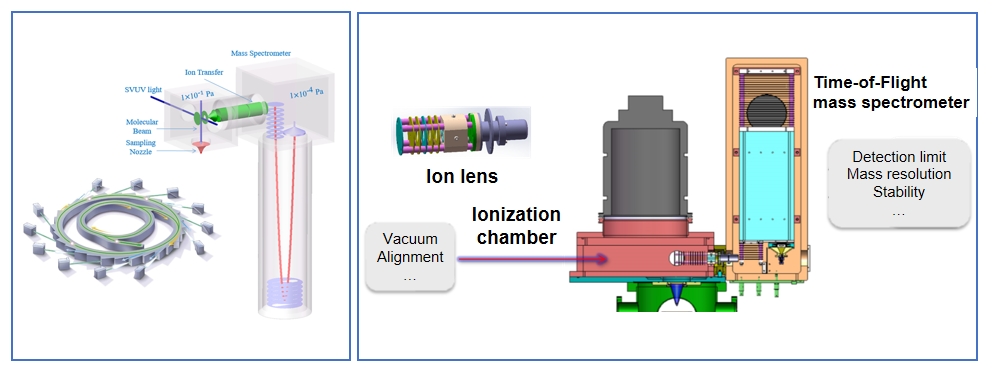- Mass Spectrometry for Energy Transformation and Astrochemistry
- Extreme Ultraviolet Electronic Structure Characterization and Lithography
- Electronic Structure Characterization for Operando Micro/Nano Devices
- High-sensitive, Space-Resolved and Time-Resolved Electron Spin Dynamics
- In-situ/Operando Soft X-ray Spectroscopy and Scattering
- Soft X-ray Ptychographic Nanoscopy
- Resonant Coherent Scattering
- High Throughput In-situ/Operando Tender X-ray Spectroscopy
- Tender X-ray Spectromicroscopy and Ptychography
- Test Beamline
Synchrotron Vacuum Ultraviolet Photoionzation Mass Spectrometry

The synchrotron Vacuum Ultraviolet photoionization–high-resolution time-of-flight mass spectrometry (SVUV-PI-TOFMS) method combines the advantages of synchrotron radiation (high brilliance and wavelength tunability), in situ online ultrasonic molecular beam sampling, and the rapid, highly sensitive detection capabilities of time-of-flight mass spectrometry. It enables near-threshold ionization and non-discriminatory analysis against polarity for gas-phase reaction products, thereby allowing the detection of key radical intermediates in energy conversion processes, distinction of isomers, and analysis of complex product compositions. This makes it highly suitable for investigating critical scientific questions in energy conversion research.

